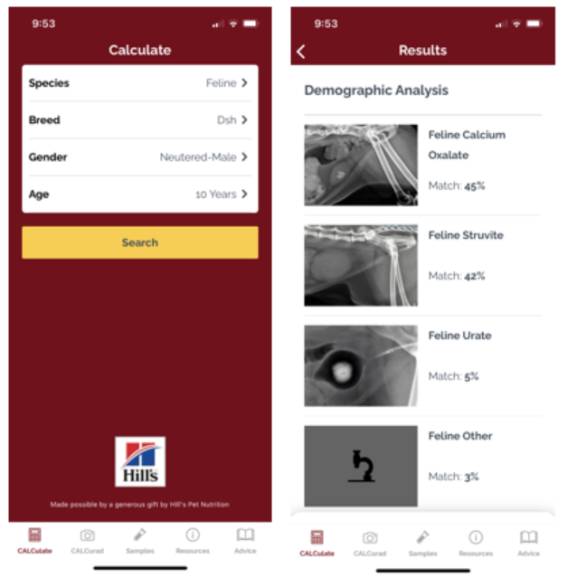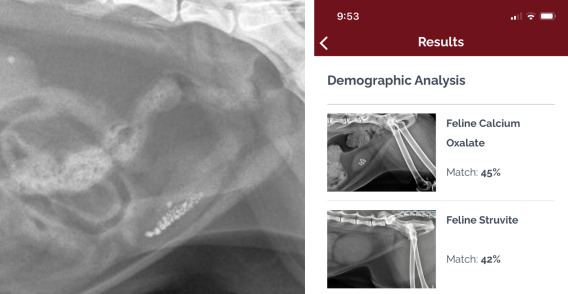ORBIT - VSV and ONIx for Canine Lymphoma
Study title
Translation of a novel combination therapy approach for non-Hodgkin lymphoma
Translation of a novel combination therapy approach for non-Hodgkin lymphoma
This site has an automatic migration set up every Monday at 5:00am to pull in the teasers of articles from the Profiles-vetmed.umn.edu site.
Occasionally the migration fails, or some articles get left out.
This can be fixed by running the migration manually.
The CALCulate function on the Minnesota Urolith Center (MUC) App will assist you in predicting stone composition. Search for and download MN Urolith from your App store on your smart phone.
Download for Apple Download from android.
Urolith prediction is a two-step process. The first step is a prevalence calculation performed in the App. The second step requires your clinical judgement by comparing your patient’s radiograph with radiographic images provided in the app.

Step 1: Use the drop-down menus to input your patient’s species, breed, gender, and age. Then activate the search button. Your selection will run through our large database of cases at the Minnesota Urolith Center to reveal how often each stone type occurred in patients with similar identity.
Step 2: Select the radiographic image on the App that matches the radiographic appearance of your patient’s stone. It may not be the one with the highest prevalence in the app but is usually close.

The radiographic appearance of this cat’s stone matches the image with the highest prevalence in CALCUlate. This cat’s stones are likely composed of calcium oxalate.
In dogs, use CALCurad, our other App tool, to differentiate between dissolvable struvite stones and other stone types.
If a radiographic image is not available for your patient, select the stone type with the highest revalence.
Step 3: Read about the urolith type(s) that match your patient’s signalment and radiographic stone appearance to guide diagnosis, treatment, and prevention.